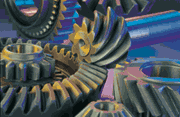 What is calibration anyway? Many people do a field comparison check of two meters, and call them “calibrated” if they give the same reading. This isn’t calibration. It’s simply a field check. It can show you if there’s a problem, but it can’t show you which meter is right. If both meters are out of calibration by the same amount and in the same direction, it won’t show you anything. Nor will it show you any trending—you won’t know your instrument is headed for an “out of cal” condition.For an effective calibration, the calibration standard must be more accurate than the instrument under test. Most of us have a microwave oven or other appliance that displays the time in hours and minutes. Most of us live in places where we change the clocks at least twice a year, plus again after every power outage. When you set the time on that appliance, what do you use as your reference timepiece? Do you use a clock that displays seconds? You probably set the time on the “digits challenged” appliance when the reference clock is at the “top” of a minute (e.g., zero seconds). A metrology lab follows the same philosophy. They see how closely your “whole minutes” track the correct number of seconds. And they do this at multiple points on the measurement scales.
What is calibration anyway? Many people do a field comparison check of two meters, and call them “calibrated” if they give the same reading. This isn’t calibration. It’s simply a field check. It can show you if there’s a problem, but it can’t show you which meter is right. If both meters are out of calibration by the same amount and in the same direction, it won’t show you anything. Nor will it show you any trending—you won’t know your instrument is headed for an “out of cal” condition.For an effective calibration, the calibration standard must be more accurate than the instrument under test. Most of us have a microwave oven or other appliance that displays the time in hours and minutes. Most of us live in places where we change the clocks at least twice a year, plus again after every power outage. When you set the time on that appliance, what do you use as your reference timepiece? Do you use a clock that displays seconds? You probably set the time on the “digits challenged” appliance when the reference clock is at the “top” of a minute (e.g., zero seconds). A metrology lab follows the same philosophy. They see how closely your “whole minutes” track the correct number of seconds. And they do this at multiple points on the measurement scales.
…
Add new comment